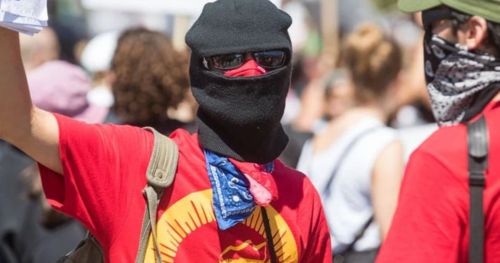

There is an increasingly acute worry over the possibility of an outbreak of civil violence.

By James Pogue
Essayist and Journalist
I bought my first gun in Cincinnati, when I was sixteen. That summer, I was part of a program that provided minimum-wage jobs for teenagers interested in the arts, and I’d been assigned to a team tasked with creating a local newspaper, where I met Marcus (not his real name, for reasons that will become obvious). He was from a neighborhood that had a plausible claim to being the toughest part of town, not far from where I was growing up, but I was white and he was black, and I was middle class and he was not. Still, we shared a dislike of police officers and passions for shoplifting, the rapper Cam’ron, getting into fistfights, and acting harder than we really were. We quickly became friends.
Like many punk-minded teenagers in the George W. Bush years, I was getting into anarchist politics. I had also developed a hazy identification with what I thought to be a tradition of Jeffersonian self-reliance and idolized the few bearded back-to-the-land gun owners I knew, who seemed to treat their firearms as an American inheritance, an inescapable part of who they were. I adopted the conviction that a truly free person would own a gun (whether a revolver or a basic 37 mm flare gun) and know how to use it, a decision partly motivated by my growing concern that the state might someday be seized by a cabal of right-wing tyrants and dispatch armed SWAT teams to take out dissidents. The possibility didn’t seem that remote—the Patriot Act had just been signed into law, and high-tech surveillance was beginning to invade every part of American life. So one day, I asked Marcus if he could get me a pistol.
He told me it would be no problem, that he could get me something for fifty dollars, and the next day, he came to work with a brown paper bag containing a decades-old, wood-handled .22 revolver with four rounds in the six-shot cylinder. Out of some misplaced sense of honor, Marcus wanted to shoot the thing to prove that it worked before completing the deal, so we went with a friend of his to try it out at the only place they could think of—the ratty crabgrass field next to my high school, in the violent but very heavily policed center of the city—at four o’clock on a weekday.
This plan was not without a number of risks: the rusty old gun could backfire; it could fire properly and the round could sail through a window and kill someone; it could fire and not kill someone, but we could all get arrested anyway; or I might break down and point out that the whole idea was insane, in which case I would humiliate myself in front of Marcus and his friend, neither of whom seemed at all worried about the possible consequences of firing a revolver in a field in the middle of the day in the middle of a major American city. Marcus took the gun, aimed it with one hand at a hillock toward the far end of the field, and pulled the trigger.
Nothing happened—there hadn’t been a round in the chamber. We could have tried again, of course, but I told Marcus I’d shoot it at home instead, in the woods behind my house, where I’d be able to fire a few rounds and see how well the gun really worked. I brought it home in my backpack on the city bus and shot it twice back in the woods, without injuring myself or anyone else. But I never got over the leeriness I’d felt that afternoon, when Marcus so casually pointed the gun and pulled the trigger, and the consequences of owning and using a gun had become suddenly and frighteningly real. I buried the thing in my backyard, and somehow never got around to digging it back out. So far as I know, it’s still there, under a fallen oak tree.
READ ENTIRE ARTICLE AT HARPER’S MAGAZINE


